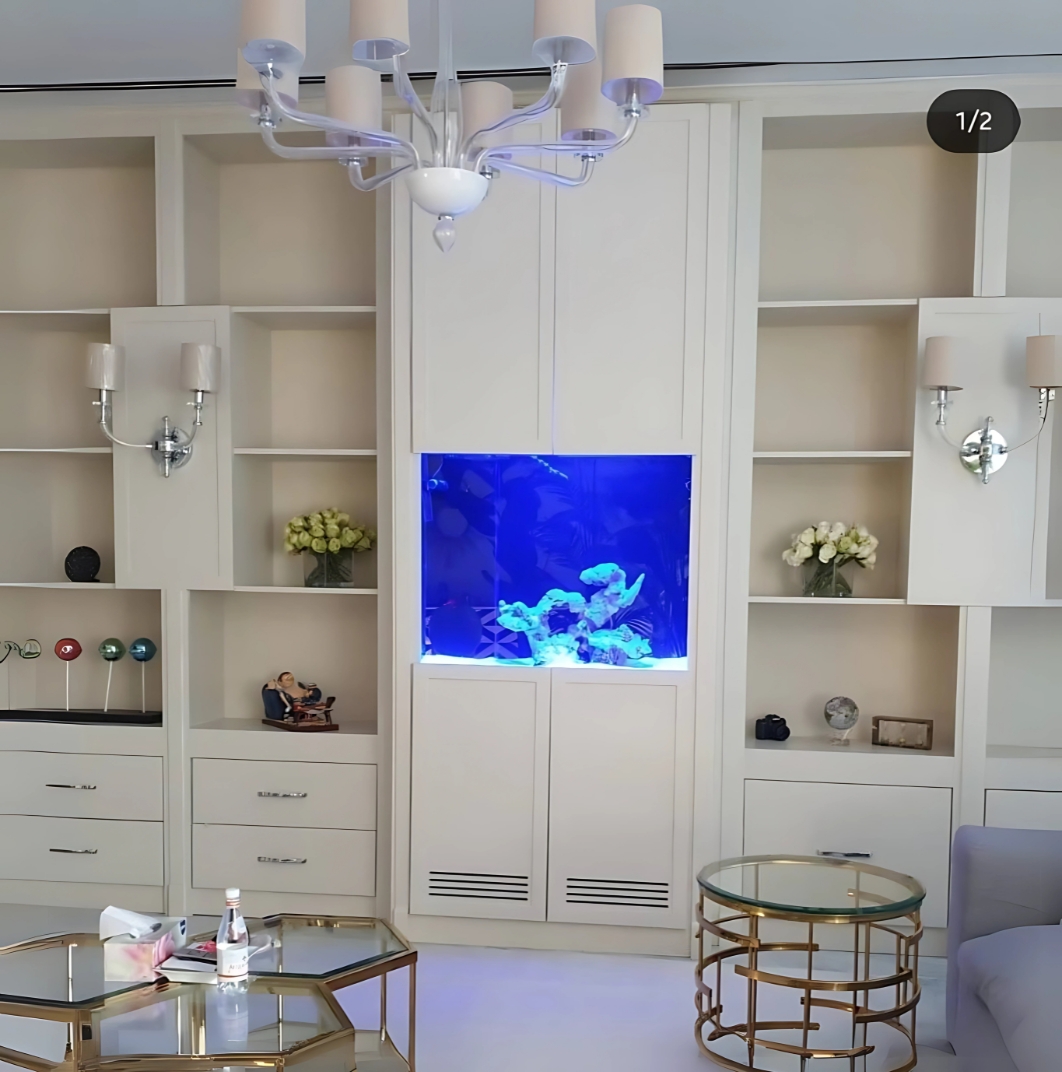Introduction
Welcome to the world of reef aquariums, where vibrant corals, beautiful fish, and a thriving underwater
ecosystem create a breathtaking experience right in your own home. Reef tanks are not only visually
stunning but also provide an opportunity to create a self-sustaining mini ocean. If you're a beginner or
looking to enhance your existing reef, this guide will walk you through the essential aspects of setting up
and maintaining a successful reef aquarium.
Choosing the Right Tank for Your Reef
The first step in building a reef aquarium is selecting the proper tank. While nano reefs (10-30 gallons) are
popular for beginners due to their size and lower costs, larger tanks (50-100 gallons) offer more room for
diverse coral species and marine life. It’s essential to pick a tank that suits your space and the type of reef
you want to create.
Nano Reef: Ideal for small spaces, but requires more frequent monitoring.
Standard Reef: Great for those with space to spare and who want a more diverse reef system.
SPS or LPS Reef: SPS (Small Polyp Stony) corals require more light and flow, while LPS (Large
Polyp Stony) corals are slightly easier to care for.
Water Parameters and Filtration
The key to a thriving reef tank lies in the stability of water parameters. Reef tanks require precise control of
temperature, salinity, pH, calcium, alkalinity, and magnesium levels. Using a high-quality filtration system
and protein skimmer will help remove organic waste and maintain the cleanliness of your aquarium. Don’t
forget about water changes to prevent nutrient buildup.
Saltwater Mix: Use a high-quality marine salt mix to prepare water.
RO/DI Water: Reverse Osmosis/Deionized water is recommended for its purity.
Filtration System: A combination of mechanical, chemical, and biological filtration ensures water
quality.
Lighting: Illuminating Your Reef
Proper lighting is essential for coral growth. LEDs are the most energy-efficient and customizable lighting
options, allowing you to control the intensity and spectrum. Different corals require different light levels, so
consider the needs of the specific species you want to house.
Coral Requirements: Soft corals (like mushrooms) need lower light, while SPS corals require
intense lighting.
Lighting Schedules: Mimic the natural day/night cycle with 8-10 hours of light and a few hours of
twilight.
Choosing Fish and Coral
When selecting fish and corals, remember that some species are more compatible than others. Always
research the specific needs and temperaments of the animals you're interested in. Here are a few options
for beginner-friendly reef tank fish and corals:
Fish: Clownfish, gobies, blennies, and wrasses are peaceful and reef-safe.
Corals: Start with easy-to-care-for soft corals like zoanthids, leathers, and mushroom corals. As you
gain experience, you can move on to SPS and LPS corals.
Aquascaping: Creating a Beautiful Reef Structure
Aquascaping is the art of arranging rocks, corals, and other decorations to create a visually appealing and
functional underwater landscape. Live rock is essential, as it not only provides a natural look but also
serves as biological filtration. You can stack the rocks in a way that mimics natural reefs, providing hiding
places for fish and coral growth.
Rockwork: Ensure there’s enough space for water to flow and corals to spread.
Coral Placement: Place corals with similar light and flow needs together to ensure they thrive.
Maintaining a Healthy Reef
Once your reef tank is up and running, regular maintenance is crucial to ensure everything stays healthy.
Here are some tips for maintaining your reef:
Water Changes: Perform regular water changes (10-20% every 2 weeks) to replenish trace
elements and prevent nutrient buildup.
Monitor Parameters: Test water parameters weekly and adjust accordingly.
Clean Equipment: Clean the protein skimmer, filter, and other equipment regularly to maintain
efficiency.
Dealing with Common Issues
Every reef keeper will encounter challenges along the way. Some common issues include algae growth,
coral bleaching, and pest infestations. By staying vigilant and proactive, you can tackle these problems
before they become overwhelming.
Algae Control: Use herbivorous fish like tangs and snails, and consider adding a refugium to help
maintain balance.
Pests: Quarantine new fish and corals to avoid introducing unwanted pests like flatworms or bristle
worms.
Conclusion
Building and maintaining a reef aquarium is a rewarding experience, but it requires patience, attention to
detail, and a love for the marine environment. Whether you're starting small with a nano reef or diving into a
larger setup, this hobby will provide you with endless beauty and an ever-evolving ecosystem. Take your
time, educate yourself, and enjoy the process!


